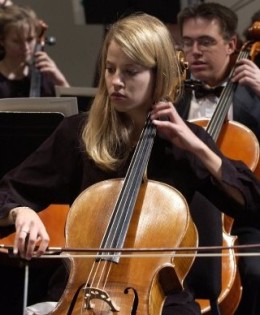Why is the cello the most beautiful sounding instrument in the world?
Because of the way we use the bow!
A natural bow stroke is one of the most fundamental and at the same time most advanced elements of cello technique. The process of learning the cello is largely one of learning which muscles NOT to use. The use of leverage and natural weight is the secret to efficient, pain-free playing, and a beautiful, natural tone. One of the highest compliments you can receive is when someone says, “You make everything seem so EASY!” The truth is that when you have learned which muscles NOT to use then playing the cello IS easy – in that it doesn’t take a lot of muscle to do. It’s all about efficient use of weight and leverage: open-open;close-close!
I am a pretty big guy, I was the captain of the wrestling team and wrestled in the 189 lbs weight bracket in high school. I used to think that somehow all that strength and mass would equate to a larger sound. Essentially, I thought I could wrestle the cello. Then I remember playing a gig next to a very slight woman named Ramona. I could probably wrap my hand around her entire forearm with my fingers touching. Yet her sound was SO MUCH bigger than mine! Pound for pound she was much, MUCH more efficient in transferring weight to the bow using a natural bow stroke.

Playing cello can be an athletic experience but it does not take very much weight to maximize the amount of downward pressure that the instrument can tolerate. A heavy arm can be an asset, but no matter how big and strong you are f you use one set of muscles to hold up the weight of your arm and another set up muscles to push the bow into the string then you are constantly fighting your own strength. The bigger you are the quicker you will wear yourself out! If you are experiencing pain on the top of your right shoulder when you play for extended periods then you are most likely holding up the weight of your arm and then using your muscles to move the arm side to side. The cello will gladly absorb the weight of your arm if you will let it. Learn to relax your weight into the string and use the open-open, close-close bow stroke. The pendulum motion will create a natural change in direction making the bow stroke remarkably ergonomic.
Pro Tip
Pay special attention the end of your upbow stroke: open, open — close, CLOSE! Many cellists start their first downbow with a closed armpit but then resist releasing the weight at the end of the upbow stroke to reset the motion.
The more you can play the cello using your BIG core muscles like your lats instead of small shoulder muscles like your deltoids, the less likely you are to become injured or fatigued and the more natural your tone will be! It takes practice and mindfulness to become the master of gravity, friction, weight, and leverage.
